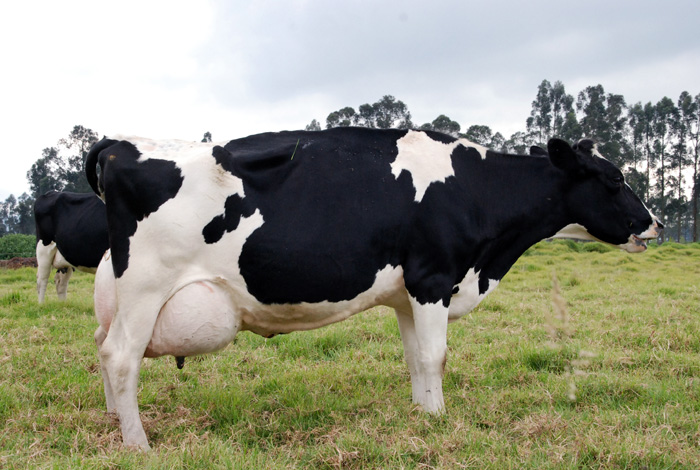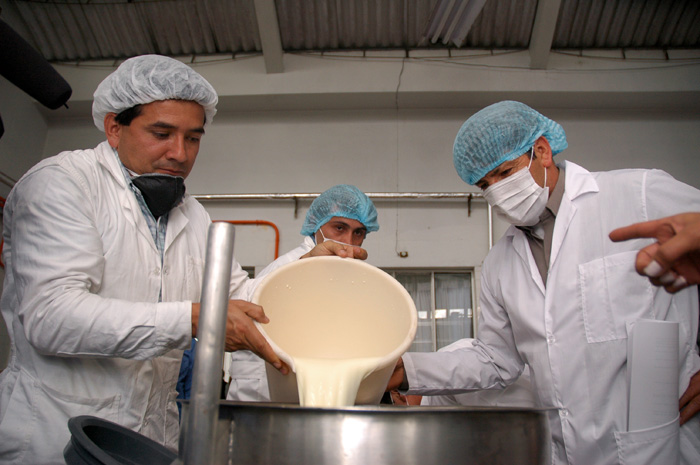Animal fat has been studied thoroughly. According to nutritionists, it is noxious because it contains high levels of cholesterol, trans and saturated fatty acids, which increase cardiovascular risk. In the case of ruminants" milk, there are more than 400 varieties of those substances.
However, one of those substances, conjugated linoleic acid (CLA), is very beneficial for human health. During the late 70"s, researcher Michael Pariza, director from the Food Research Institute at the University of Wisconsin"Madison, discovered the anti"cancer properties of this compound.
Since then, through in vitro and in vivo experiments in rabbits, rats, mice, fed chickens and pigs, CLA has shown additional benefits, such as carcinogenetic inhibition within breast, colon, prostate and gastric cancer.
For this reason, the Faculty of Veterinary Medicine and Animal Breeding, and the Food Science and Technology Institute (ICTA) at the Universidad Nacional de Colombia, together with the Ministry of Agriculture and Rural Development, completed a study aiming to increase the levels of this compound within milk.
According to the literature, animals that consume fresh pastures have higher levels of linoleic acid than those that are fed in confinement. Our first analysis was to establish the concentrations of those substances in Colombian milk and determine the benefits of its production "through silvopasture" compared to Europe and US" production, which is completed in confinement," said Juan Carulla, Dean of the Faculty of Veterinary Medicine and Animal Breeding at the Universidad Nacional de Colombia.
The researchers took samples from several farms at the Bogotá Savannah, then established that, in average, Colombian milk contains between 2.5 and 3 times more CLA than the milk from countries where the cattle remains confined. "However, we saw that the concentration was not uniform, in other words, there were variations among the farms," said Carulla.
From these results, the Universidad Nacional de Colombia started three additional studies: the first one looks to characterize Colombian milk in order to determine the areas according to the grass types and on the sort of cattle that presents the highest levels of CLA in their milk; the second one, lead by ICTA, intends to transform the production of food rich in CLA.
"Up to now, results are promissory. While the average concentration of CLA in US and Europe is around 5 mg per gram of fat, Colombian milk has between 22 and 25 mg per gram of fat. A considerable difference," said Carulla.
Due to the fact that by adding rice flour the levels of CLA in the milk have increased up to a 30 percent, the goal of the Universidad Nacional de Colombia, together with the Ministry of Agriculture, is to stimulate the industry to commercialize products rich in CLA and to compete in the market of healthy functional food.
The project is developed together with a national dairy company and looks for a market that would benefit those small producers that manage to increase the levels of linoleic acid in the milk from their dairy farms.
Sedes
 Correo Electrónico
Correo Electrónico
 DNINFOA - SIA
DNINFOA - SIA
 Bibliotecas
Bibliotecas
 Convocatorias
Convocatorias
 Identidad UNAL
Identidad UNAL




